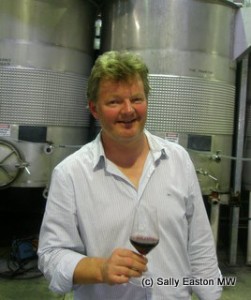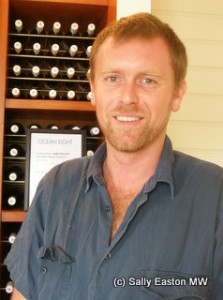Minerality quote, unquote 4

Michael Glover
A recent visit to Australia turned up some interesting views on minerality.
Previous issues of “quote, unquote” are all here too: one, two and three.
Nick Farr, of By Farr and Farr Rising, in Geelong said minerality is a “tightness. It’s rainfall reacting with the soils. In high rainfall years limestone gives higher acidity [which is] reflected in more minerality.” Farr followed up with a link to temperature, adding “you lose too much acidity with raw heat” implying a lower minerality expression with higher heat.
In neighbouring Geelong property Bannockburn Vineyards, winemaker Michael Glover, exemplified with chardonnay, saying “my perception [of minerality] is when a wine has a presence on the nose and on the palate that can’t be defined. The varietal fruit of chardonnay is turned right down – peach , melon, pineapple – and you pick up chalk, slate, river pebble, stone. It’s ripe but not unripe. It’s a non-varietal expression that’s in the green spectrum – blackcurrant, lime, gooseberry. And it’s textural, so you’re happy that the wine is ripe, but it’s not a fruit expression, such as with a good Chablis.”
Further south, in Gippsland, Phillip Jones of Bass Phillips is in the terroir camp, saying his vineyard area is of ancient volcanoes “an old dinosaur stomping ground, with an aquifer underneath. The water goes straight down, and [therefore] the roots go down forever, [getting] high amounts of minerals from the [old] volcanoes, as well as high vigour.”
Jones added a biodynamic thesis to minerality, saying “one of the big influences has been using biodynamic preparations and concepts. This has lifted the wines to another level of vibrancy, freshness and minerality.”

Mike Aylward
There’s talk of minerality, too, in the skinny chardonnay styles (see later posting) that are gaining ground in Mornington Peninsula. Styles that are lean, tight, steely, not too high in alcohol, and about as far removed from the big, blousy, full-blooded chardonnay of the 1990s and early 2000s as it’s possible to be.
Some speak of the styles being made by Tom Carson at Yabby Lake in ‘mineral’ terms, but the talk here is also of earlier harvesting and of more technical winemaking aspects, of no malo and of ‘good’ reduction: “yummy, friendly sulphides rather than terrible thiols” in the words of Glover. Does all this murky the already muddy waters of minerality?
Mike Aylward of Ocean Eight, also in Mornington Peninsula, said “you need the canopy for the style of Verve Chardonnay, shading of the fruit to keep it in a crisp style. And [more] vine age will get more minerality.” Then, he added “if I can get sulphides on top, a bit of reduction [though] I have no idea how not to get too much, it’ll be a beautiful wine.”
His vines are 15-16 years old.
My research visit to Australia in February 2012 was sponsored by Wine Australia and Wine Tasmania.



